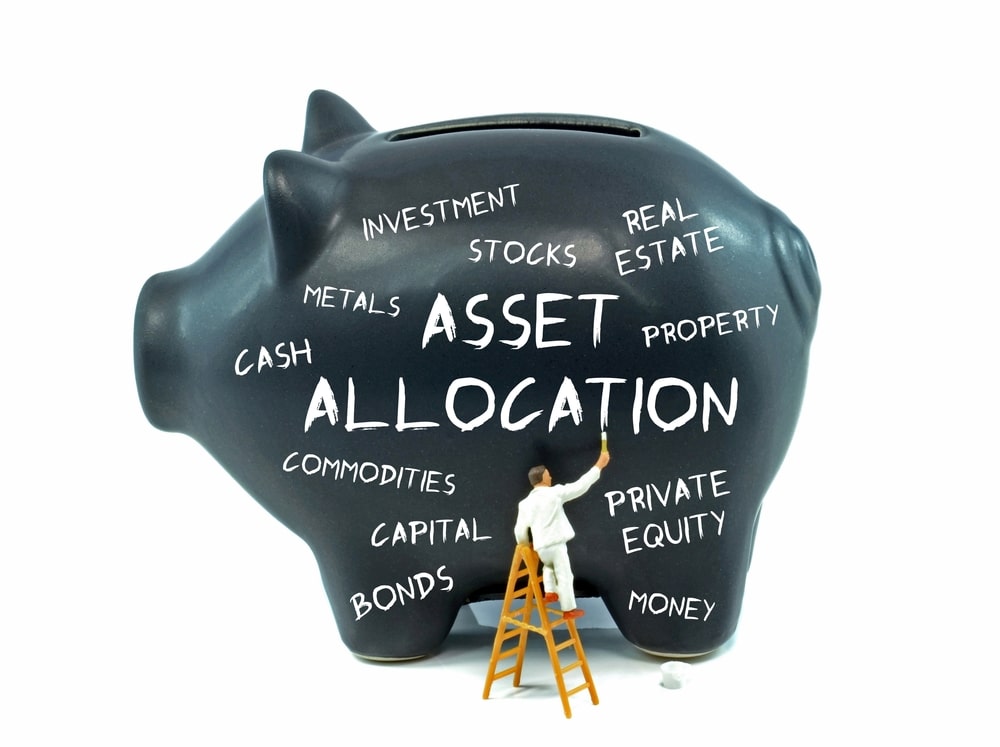
Asset Allocation (Part 1): What’s In My Security Bucket?
This post may contain links from our sponsors. We provide you with accurate, reliable information. Learn more about how we make money and select our advertising partners.
Quick, do you know what your asset allocation is? Also, are you confident that it will help you achieve your financial and life goals?
You've probably encountered the words “asset allocation” at some point if you've read personal finance books & blogs, or have had a conversation with a financial advisor.
In fact, you’ve likely heard the phrases, “Don’t put all your eggs in one basket” and, “Don't place all your bets on one number.”
What both of these really mean is that you shouldn’t put all your resources and effort into one thing, and rely on that completely to get you where you want to be.
I believe it's certainly true when it comes to your career in medicine, investments, and streams of income. That's why one of my major focuses is to constantly make sure I'm well-diversified. It gives me peace of mind knowing that whatever happens, I'm hedged and can ride through it.
Asset Allocation and Investments
Investments, by nature, carry some level of risk and are not fully predictable. But let's face it, what in life is absolutely certain?
In fact, without taking on any risk, you're all but guaranteeing yourself that you won't reach your goals in life. This is part of something called the cost of inaction.
But the amount of risk varies by investment. The amount you can make, or potential return, is also highly variable. Risk and return typically go hand-in-hand so it’s important to consider both when deciding how you’re going to divide your money and assets.
So an asset allocation is simply how you divide your hard-earned money and decide where to invest in.
If you search “asset allocation,” you'll eventually land on a calculator that asks you for your age, your risk tolerance, then it'll tell you the ratio you should have in stocks vs bonds. What these calculators are trying to help you determine is how much risk you should be taking depending on your age and how close you are to retirement.
In dividing up your investments, they'll come up with an ideal asset allocation. Financial advisors will often take you through the same exercise.
Personally, I've gone through this exercise many times but the thing that's always bothered me with all these calculations is that they never seem to take into account the equity and value I have in my real estate portfolio or the cash flow it provides.
They also totally ignore the investments I've made in “alternatives” like gold or angel investments and ignores the various businesses I own and the value they hold. Instead, I'm simply told that I should only dedicate up to 10% of my investable assets into these “alternative” assets.
I just don't agree. I believe that a true asset allocation needs to take into account all of the things you own, whether it’s your house, your cars, your stocks, bonds, investment properties, gold bars, businesses, pieces of private real estate deals, etc.
In fact, Ray Dalio, a manager of one of the largest hedge funds in the world states that you should spread your investments across 15 uncorrelated assets. That’s a lot of different assets to consider and it’s totally different from hearing you should simply have your investments in stocks, bonds, or cash.
The Buckets
So I never really found a comfortable way to look at my overall asset allocation. I used the amount of cash flow these assets produced as my main measuring stick. I also looked at my net worth as a secondary scorecard. However, I had a hard time deciding how to allocate my funds and my only goal was cash flow.
So I just kept dumping my investable funds into real estate. That's not necessarily a bad thing but there was always a little nagging thought in the back of my head wondering if I'm getting too heavily weighted in one asset class. Unfortunately, I had no clear way to organize my thoughts in this area.
All this changed when I learned of the “Bucket System” as explained in Money Master the Game by Tony Robbins. In this book, he interviewed the likes of Warren Buffett, Ray Dalio, Paul Tudor Jones, Steve Forbes, etc. to do what he does best – learn from others extremely successful in their fields, find patterns, and then model them.
In one of my favorite chapters of the book, he talks about how to create your ideal asset allocation. It was so simple, but also so different than what I'd heard up til this point.
The Three Buckets
He states that you need to think about your asset allocation in terms of 3 different buckets:
- Security Bucket
- Risk/Growth Bucket
- Dream Bucket
Your Security bucket contains safe, low-risk investments like cash, bonds, CDs, annuities.
The Risk/Growth buckets contain riskier investments, like stocks, real estate, businesses.
Lastly, the Dream bucket contains funds that you actually use to enjoy life because what's the use of money if you don't enjoy any of it.
So to understand what this is all about, you have to figure out what allocation you'd ideally like in each bucket, then figure out what you actually have in each.
My Ideal Allocation
Considering where I'm at in life financially and in my career, and thinking about where I want my life to be, I came up with this allocation:
Security Bucket – 40%
Risk/Growth Bucket – 50%
Dream Bucket – 10%
The one thing I've heard from many successful people who have had significant ups and downs is that they wish they had kept a larger security bucket to weather the volatility. No one really expects that their financial security will be challenged if they're on a great path. But life happens and as we said, we know it's unpredictable.
So while it's slightly against my nature, I decided to increase the allocation in my security bucket.
Just so you know, this is my initial allocation. I'm always open to course-correcting but you have to start somewhere.
The Security Bucket
So the Security Bucket contains items from the following list:
- Cash / Cash equivalents
- Bonds
- CDs
- Pension
- Equity in home
- Annuities
- Certain Life Insurance Policies
So what’s in my Security Bucket:
Cash / Cash Equivalents
Cash is simply money sitting in my checking or savings account and some in Money Market Funds. Personally, I don't keep a lot of cash because I've never liked the idea of money sitting there being eroded by inflation. In fact, that's why I don't intentionally keep an emergency fund but have found other ways to access capital if needed.
However, I do recognize that there's safety in cash and one of my friends keeps reminding me that Warren Buffett's fund is sitting around 20% in cash right now.
Bonds
Bonds are simply a promise to pay back someone. They usually have a maturity rate and an expected interest rate yield. They're fixed income investments and I carry bonds simply in my 401k as part of diversified holding.
Home Equity
I don't consider my personal home an investment. In fact, I consider it more of a savings account. It's also a hedge against inflation because as inflation increases so too does the price of homes.
I was fortunate to buy at the end of 2011 and for those who remember, that was near the bottom of the real estate market, especially in Los Angeles. Since that time, home prices have increased quite a bit. So on paper, that has created a fair amount of equity in my home.
The thing is, it’s just sitting in the walls and again, I don't consider it an investment. A lot of “my eggs” are in my home, so personally I plan on refinancing it and keeping some cash on the sidelines for possible opportunities. With interest rates super low, the carrying cost is quite minimal. If I don't use it, I can always throw it back in the home.
What's My Current Security Bucket Allocation?
I calculated my Security Bucket allocation (after calculating all of my other buckets) and currently, it’s sitting at 27% of my total funds. My goal as stated above is to be at 40%.
So this is telling me that of my new investable funds, I should be directing it to increase the security bucket. As real estate deals exit from my risk/growth bucket, I should also consider how those funds get allocated.
Having this ideal allocation tells me how to divide things up, I just have to decide what exact investment to direct my funds to. Based on the “15 uncorrelated assets strategy”, I might invest in a category I've never invested in. I'll keep you updated on what that is.
In Part 2 of this series, I’ll go over what’s in my risk/growth bucket and in Part 3, I’ll talk about my dream bucket.
Have you calculated what’s in your Security Bucket? Let me know either in the comments below or in the Passive Income Docs FB Community. Would appreciate hearing your thoughts on this.

Disclaimer: The topic presented in this article is provided as general information and for educational purposes. It is not a substitute for professional advice. Accordingly, before taking action, consult with your team of professionals.

